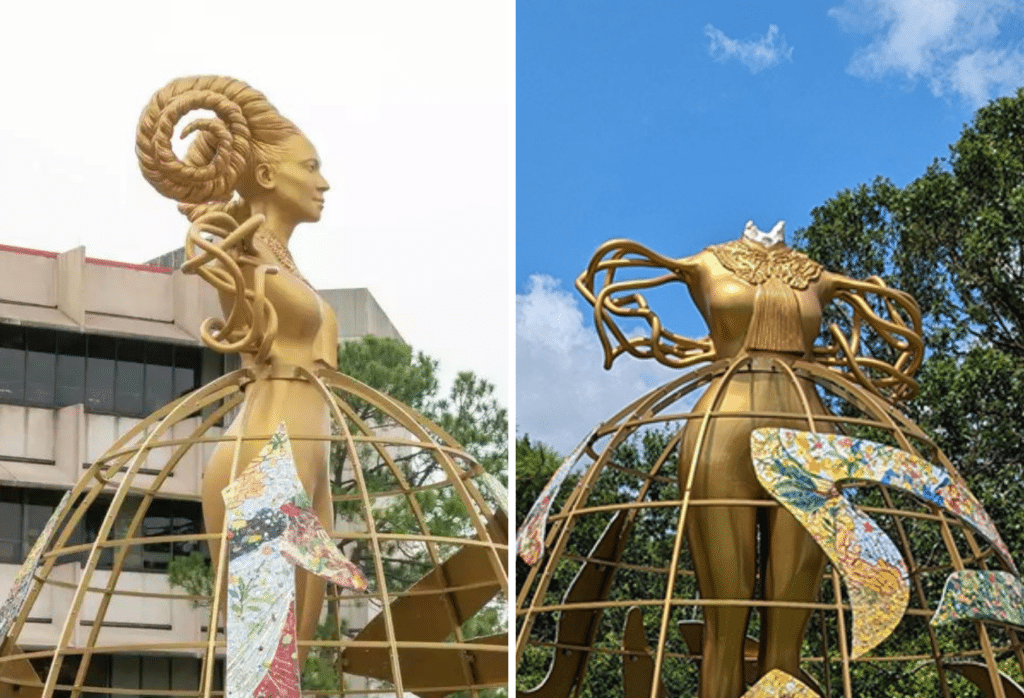A large golden statue celebrating women was decapitated by a man with a hammer last month in Houston, and the artist isn’t planning to restore it.
Pakistani American artist Shahzia Sikander explained that the work, which she’d called “Witness” as an allegory of the power (“or rather the lack of power that women are accorded within the justice system”) has lived up to its name in an unexpected way.
“As the artist who created the work, I have chosen not to repair it,” she wrote in an op ed for the Washington Post. “I want to leave it beheaded, for all to see. The work is now a witness to the fissures in our country.”
Sikander created the 18-foot-tall golden statue earlier this year after being co-commissioned by New York’s Madison Square Park Conservancy and by the Public Art of the University of Houston System.
In February, the work was transported from New York to Houston as part of the University of Houston’s System’s Temporary Public Art Program.
Sikander said that the sculpture had been criticised by a prominent antiabortion group, Texas Right to Life, who took issue with the statue’s ramlike horns.
“The main charge was that the work honoured abortion and had “satanic” features,” she explained.
“When we are witnessing a regression of women’s rights around the world, especially in the United States, art can function as a vehicle of defiance. It can also be a path toward rectification,” she wrote.
“It’s clear to me that the people opposed to the statue object to its message of women’s power.”
In June, the Texas Supreme Court rejected a challenge to the state’s restrictive abortion ban. Doctors who perform abortions can risk life in prison and fines of up to $US100,000, as well as have their state medical licenses revoked.
When news of the vandalism was made public, Sikander released a statement to the Houston Chronicle, saying “As an artist, as a woman, I personally feel harmed.”
“It is an intentional, violent and misogynistic act that should be investigated as a crime, and I urge the University of Houston to release the footage of the perpetrator.”
According to the artist, university officials told her they had footage of the vandalism. On July 17, the university’s police department released the video of the desecration on campus.
“[It] shows a premeditated attack in the middle of the night,” Sikander said this week.
“The First Amendment protects my freedom to create art, irrespective of how one chooses to interpret my work. And we should leave the statue the way it is: a testament to the hatred and division that permeate our society.”
Sikander encouraged the university to “educate the public about the art that was savaged and address the ignorance and rage underlying the attack.”
“We should use art to cultivate imagination, build empathy, bridge political divides and further our common humanity.”

